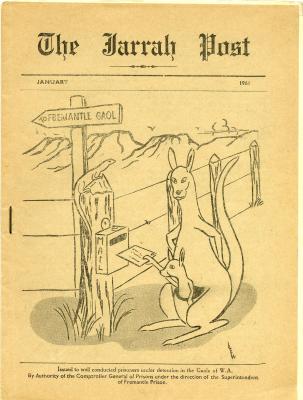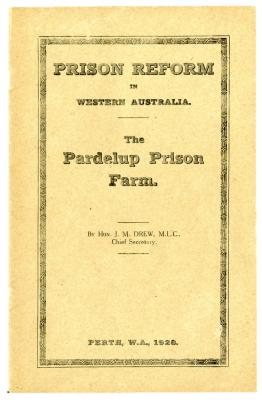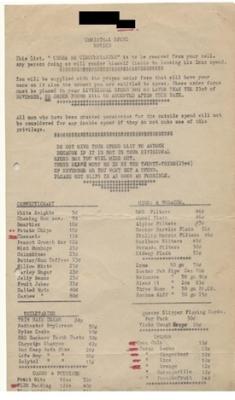ANKLE STRAP USED IN HANGING
Short, thin piece of dark brown leather, with a silver metal buckle attached to one end. In the centre is a square, silver metal, spring loaded clip with silver D ring attached. The other end of the strap has eight holes through the leather, with the end tapered to a sharp point.
This pair of ankle straps (1985.2.1-2) in the Fremantle Prison Collection were allegedly used by the hangman to secure either the hands or feet of Eric Edgar Cooke, the last man legally hanged in Western Australia, during his execution in October 1964.
Details
Details
Fremantle Prison became Western Australia’s only official place of execution in 1888. The first execution held at Fremantle Prison in the newly erected gallows took place on February 2, 1889, and over the next 75 years Fremantle Prison saw the execution of 42 men and one woman.
On the day of an execution the condemned person was woken at 5:30am, allowed to shower, and given breakfast. They were then transferred from death row, located in New Division after 1907, to the ‘Death Cell’ in the Solitary Confinement Block, where they were kept under constant surveillance. Here they were allowed a visit from a priest and offered the option of a glass of whisky or brandy. Before 8am, the prisoner was escorted to the gallows where their feet and hands where bound with leather ankle and wrist straps. A canvas hood was then placed over their head, followed by the noose. The noose was not formed by a knot, as is often believed, but by a free-running steel eye, which was adjusted to sit under the jaw, with the eye at the back of the neck. When the trap door was opened the condemned would drop, and the noose would cause instantaneous death through fracture of the neck, not by strangulation.
The Superintendent of the Prison and four Officers attended the hangings, and together signed as witnesses. Other attending witnesses varied, but on average there were often 12 other people present. In the case of Martha Rendell, the only woman ever to be hanged at Fremantle Prison, there were 25 people who witnessed her execution. One officer was positioned in each corner around the trap door to ensure the prisoner stood up straight, though a chair was provided in case the prisoner was unable to stand. In most cases preparation was timed so that just as the first stroke of 8am was sounding on the Prison’s clock, the trap door lever was pulled.
Once the sentence had been carried out, the body of the deceased was taken down and placed on a stretcher in the pit below the trap doors. A doctor waiting on the lower level examined the body and declared the person dead. The undertakers would then arrive a short time later to collect the body, by backing up their hearse to the main doors in 2 Division.
The last person to be hanged at the gallows in Fremantle Prison was Eric Edgar Cooke, in 1964. Cooke was a serial killer, and although only charged with one murder, supporting evidence and his own voluntary confessions, indicate that he killed a number of people during his three or four year reign of terror in the suburbs of Perth.











